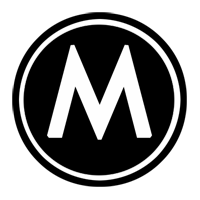It's all in the Zone
I feel like writing a technical post. Ansel Adam created a way to control BW film, he called his methodology the Zone System. At it’s heart It's about pre-visualization of a scene and the ability to get that visualized image to a final print, with limited guess work. By splitting a scene up into ten zones, I-X (roman numerals for aesthetic purposes) with ‘I’ being black with no detail and ‘X’ being white with no detail, it’s possible to see the color world in black and white tones. Any given scene will have a range of zones, some spanning the entire ten range or more, while others may be severely low-contrast covering barely 3 zones. How's that possible? Well it's all about light. A low-contrast scene will typically be overcast with no direct sun or shadow areas, mid-tone subject matter (think green grass which happens to fall at Zone V). In digital terms the histogram can be interpreted exactly the same way. The more information on the histogram left(shadow) to the right(highlight) the more contrasty the scene is. To read a scenes zone range I use a 1 degree spot meter that I can look through like a gun scope and target very small areas of a scene. The meter reads these as exposure combinations. For example I read a granite boulder in the foreground, on the shadow side and it gives me an exposure of 1/30 @ F/8. What it's telling me is if I expose this piece of film at that exposure that shadow area will be Zone V, or middle gray and not the shadow as it looks in the scene. The meter is telling me each place I use it what the exposure is to give me middle gray, that's all any meter does, even advanced dSLR meters do this. So, knowing that the exposure given will yield a middle gray value for a subject I want to yield a darker shadow value what do I do? I simply decrease the exposure. If 1/30 @ F/8 yields middle gray for that area in the scene, then 1/125 @ F/8 will yield a Zone III, or black with substantial detail. Two stops darker. Because Zones represent tonality, but they also represent stops. Zone I to Zone II is one full stop. 1/30 to 1/60 is one full stop. There's a simple moniker that BW guys have been using for a long time; shoot for your shadows and develop for your highlights. After deciding we want that shadow on Zone III, we continue to meter the scene to find out what the highlights are doing, in this case lets put them on Zone VI, or one stop brighter than middle gray, a little too muddy for my taste. While photographing you expose your shadows where you want them. That will automatically put your highlight areas on a certain Zone as well (In this case Zone VI). But here's where the real fun happens. When that piece of film is developed, while it's sitting there soaking in the developing tank, the developer acts on the shadow areas of the negative first, developing those fully within a minute, give or take. The highlights on the other hand take much longer, and the weaker your developing solution is, the longer they take to develop. So, by testing your film and developer (I won't go into that here, but will be glad to offer advice and help to anyone who wants to test BW film) you can get specific times listed that will tell you when to stop developing to arrest the development of any highlight area. I know where I want that particular highlight to fall because when I metered the scene initially we placed the shadow side of the granite boulder on Zone III, and we read that the highlight fell on Zone VI. But we want the highlight to fall on Zone VII, or a white with substantial detail. Based on our testing of this particular film/developer combo I give the film an additional minute of development to bump up that highlight Zone to VII. Because the shadows are already done developing within the first minute they're left alone.
That's it, that's the Zone system in a nut shell. There's a lot more intricacy to it, but the basics are; pre-visualization and control of all materials. In landscape photography there's enough inconsistency in the scene that can't be controlled; light, weather, clouds, etc. so there's no excuse for not having full control of what you can; your camera, film development and final print. If those are not left to chance your ability to get good images increases tenfold. Chance favoring the prepared mind (I didn't come up with that one, Adams did), but I use it as one of my photographic creeds.
I love this stuff, and if anyone wants to test BW film, or learn more about the zone system please contact me, I'd love to lend a helping hand.
